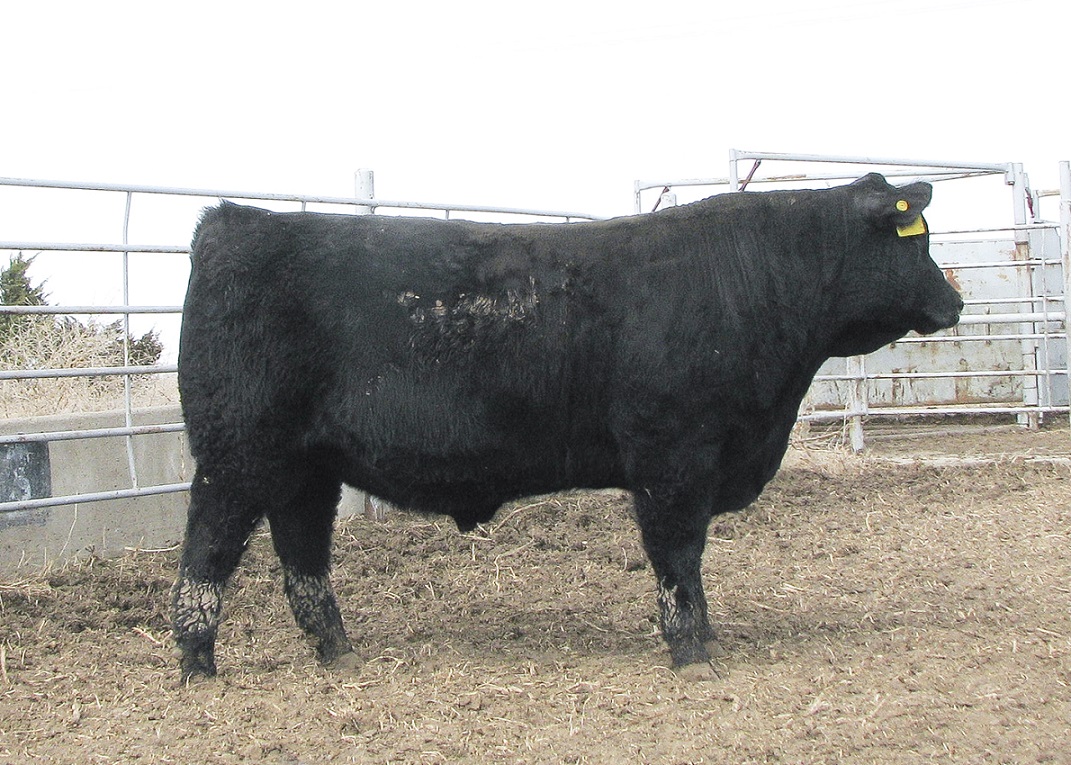
By Matt Spangler, NE Extension Beef Genetics Specialist
ECONOMICALLY RELEVANT TRAITS
Sire selection does not need to be overwhelming or complex. Centuries of work by geneticists and statisticians have allowed for the development of tools that help producers make decisions relative to the next bull you purchase; do not ignore them. The key questions that every rancher needs to answer are:
1) What are my breeding/marketing goals?
2) What traits directly impact the profitability of my enterprise?
3) Are there environmental constraints that dictate the level of performance that is acceptable for a given trait in my enterprise?
Once these three questions are answered, sire selection becomes much simpler. The answers to these questions inherently lead a producer to the traits that are economically relevant to their enterprise. We call these traits Economically Relevant Traits (ERT).
Fundamentally these are traits that are directly associated with a revenue stream or a cost. All traits that are not ERTs are indicator traits, or a trait that is genetically correlated to an ERT but not an ERT itself.
Classic examples of indicator traits include ultrasonic carcass measurements and birth weight. Ultrasonic carcass measurements are a non-destructive measure of traits such as intramuscular fat percentage (IMF). Producers do not receive premiums for IMF levels, rather premiums (and discounts) are applied to quality grades. Assuming that carcass maturity values are the same, actual carcass marbling is the driver of quality grade. Although IMF is genetically correlated to carcass marbling it is not the ERT. Birth weight is another great example of an indicator trait. Selection to decrease birth weight in an attempt to reduce the prevalence of dystocia is practiced by numerous commercial bull buyers. However birth weight does not have a direct revenue source or cost associated with it. The trait that does have a cost associated with it is calving ease (or difficulty). Calving ease is related to the level of assistance needed during a calving event. Although the two are related, the genetic correlation between calving ease and birth weight is only between -0.6 and -0.8, suggesting that birth weight only explains 36-64% of the genetic differences between animals for calving difficulty.
MULTIPLE TRAIT SELECTION
Selecting to improve multiple traits simultaneously can be cumbersome. Just open up any sale catalog and it is easy to become confused immediately. Economic indices can help alleviate this confusion. An economic index is a collection of EPDs weighted by their economic value such that traits with greater impacts on production goals have a larger economic weight associated with them. The basic equation of an economic index is:
I = EPD1 x a1 + EPD2 x a2 + EPD3 x a3 + EPDn x an
Where: I is the index value; EPDn is the EPD for trait n; and an is the economic weight associated with trait n.
Below are some examples of currently available economic indexes. Angus, Hereford, Charolais, Gelbvieh, Limousin, Shorthorn, and Simmental all publish at least one economic index. A full description of all available economic indexes can be found in the University of Nebraska NebGuide G1847 available at http://beef.unl.edu/nebguides
BEEF VALUE ($B)
This Angus index includes EPDs for yearling weight, carcass weight, and carcass and traits. Producers wishing to enhance growth and simultaneously select for quality and yield grade should use this index. It is a terminal index and caution should be used if replacement females are retained to avoid increasing mature weights of females.
Example:
Bull A +65.60
Bull B +52.50
We would expect that the calves from Bull A would be worth $13.10/hd. more than those from Bull B if retained through a feedlot and sold on a Certified Angus Beef (CAB) grid.
ALL-PURPOSE INDEX (API)
This Simmental index assumes that the sire will be used on both cows and heifers and that heifers will be retained as replacements while all other offspring will be sold grade and yield. This index is targeted at a producer that is looking to optimize revenue from fed cattle and maternal characteristics of replacement heifers.
Example:
Bull A +138
Bull B +118
We would expect that the calves from Bull A would be worth $20/hd. more than those from Bull B. Over a span of 4 years Bull A could generate $2,400 more revenue than Bull B if mated to 30 females/yr. ($20/hd x 30/hd x 4 yrs.).
CHOOSING AN INDEX TO USE
When making selection decisions based on economic indices, it’s important to consider your particular breeding objective and the traits that will achieve desired production goals. For instance, if your production goals included retaining replacements and selling cull heifers and steer progeny at weaning, then an index that assumes all offspring are sold on a grid-based system is inappropriate for your operation.
It is also important to know the breed average values for particular indexes and to use percentile ranks to determine how far above or below average a particular animal is compared to the rest of a breed.
To listen to BeefWatch podcasts go to: https://itunes.apple.com/us/podcast/unl-beefwatch/id964198047 or paste http://feeds.feedburner.com/unlbeefwatch into your podcast app.